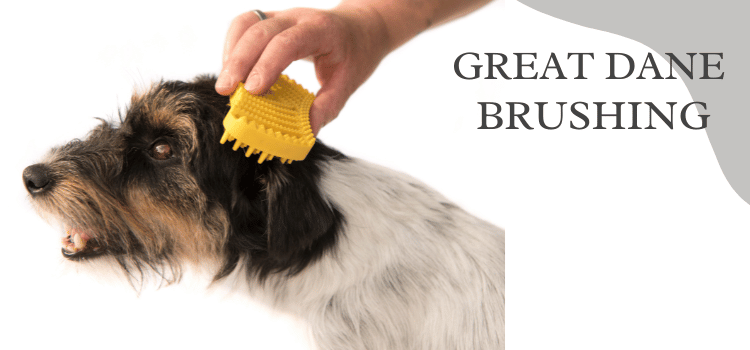The Blue Great Dane is a magnificent dog breed that is known for its loyal and protective nature. These dogs are also very intelligent, making them easy to train. If you are thinking of getting a Blue Great Dane, then read on to find out more about this incredible breed!
What is a blue great dane?
The blue great dane is a beautiful and unique breed of dog. They are very rare, and are often mistaken for other blue-eyed breeds such as the Weimaraner. Great Danes are one of the tallest breeds of dogs, and blue great Danes are no exception. They can reach up to 32 inches at the shoulder, and weigh up to 200 pounds. Blue great Danes have a short, smooth coat that is easy to care for. They are loyal, loving, and gentle dogs that make great family pets.
History of blue great danes
Blue great danes are a relatively new color variation of the great dane breed. While the first recorded blue great dane was born in the early 1800s, the coloration wasn’t officially recognized by the American Kennel Club until 1987.
So where do blue great danes come from? The blue color is caused by a recessive gene, which means that both parents must carry the gene in order for their offspring to be blue. Blue great danes can be born to any two great dane parents, regardless of their coloration.
While blue great danes are still relatively rare, their popularity has been on the rise in recent years. Thanks to their striking appearance, blue great danes make wonderful companion animals and have even been featured in movies and TV shows!
Physical characteristics of a blue great dane:
The blue great dane is a large and muscular dog breed. They are very powerful and have a strong build. The head is large and they have a long snout. Their coat is short and dense, and it is typically blue in color. They are also known for their calm and gentle personality.
Temperament of a blue great dane:
The temperament of a blue great dane can be described as calm, loyal, and loving. They make great family pets and are very good with children. They are also very intelligent dogs and are easy to train.
The Blue Great Dane is a large and imposing dog, but don’t let that fool you – they are some of the gentlest giants around.
Sweet tempered and loving, these dogs make great family pets. They are also relatively easy to train, although their size can make them a bit of a handful for first-time dog owners. If you’re looking for a big dog with a heart of gold, the Blue Great Dane is the perfect breed for you!
Are These Dogs Good for Families?
Yes, Blue Great Danes make wonderful family dogs. They are gentle, patient, and loving by nature. They also tend to be very good with children. However, it is important to remember that all dogs are individuals and some may be better suited for a family environment than others.
If you are considering adopting a Blue Great Dane, be sure to spend some time getting to know the dog first to make sure he or she will be a good fit for your home.
Does This Breed Get Along with Other Pets?
The Blue Great Dane is a gentle giant, and as such, they generally get along well with other pets in the household. However, because of their size, they may unintentionally bowl over smaller animals. It is important to socialize them early on and teach them how to interact appropriately with other animals.
Facts About Blue Great Danes
Blue great danes are very rare, and they are often mistaken for other dog breeds. Blue great danes are not recognized by the American Kennel Club (AKC), but they are recognized by some other kennel clubs.
While most great danes are either black or fawn, blue great danes have a blue-gray coat. Blue great danes are not albino, and they are not prone to the health problems that albino animals often have.
Despite their rarity, blue great danes make excellent pets. They are gentle giants, and they are good with children and other animals. Blue great danes are also relatively easy to train.
If you are interested in owning a blue great dane, be prepared to pay a premium price. Blue great danes can cost upwards of $2000, depending on their bloodline and breeder.
Overall, blue great danes are beautiful, gentle creatures that make excellent pets. If you can afford one, they make a wonderful addition to any family.
Things to Know When Owning a Great Dane:
Owning a Great Dane can be a lot of fun. They are big, friendly dogs that love to play and cuddle. But, there are a few things you should know before owning one of these gentle giants.
First, Great Danes need a lot of exercise. They are very active dogs and need plenty of space to run around. If you live in an apartment or small house, a Great Dane may not be the best pet for you.
Second, Great Danes are known for being droolers. So, if you’re not a fan of dog drool, you may want to reconsider owning a Great Dane.
Third, these dogs are also known for being quite protective of their owners. So, if you’re looking for a guard dog, a Great Dane would make an excellent choice.
Overall, Great Danes make wonderful pets for those who have the space and time to care for them properly. If you’re considering adding one of these furry friends to your family, be sure to do your research first!
Food & Diet Requirements:
When it comes to feeding your blue great dane, there are a few things to keep in mind. First of all, these dogs are big eaters! They typically need around 4-5 cups of food per day, split into two meals. That being said, every dog is different and some may need more or less food than others. It’s important to consult with your veterinarian to figure out how much food is right for your dog.
Great Danes are also susceptible to bloat, which is a potentially deadly condition that happens when the stomach twists and gas builds up. To help prevent bloat, it’s best to feed your dog several small meals throughout the day instead of one large one. You should also avoid giving your dog exercise immediately after eating.
When it comes to what kind of food to feed your blue great dane, you have a few options. You can either feed them a commercial dog food diet or make your own homemade food. If you decide to go the homemade route, be sure to consult with a veterinarian or animal nutritionist to make sure you’re providing all the nutrients they need.
No matter what kind of diet you choose for your blue great dane,















